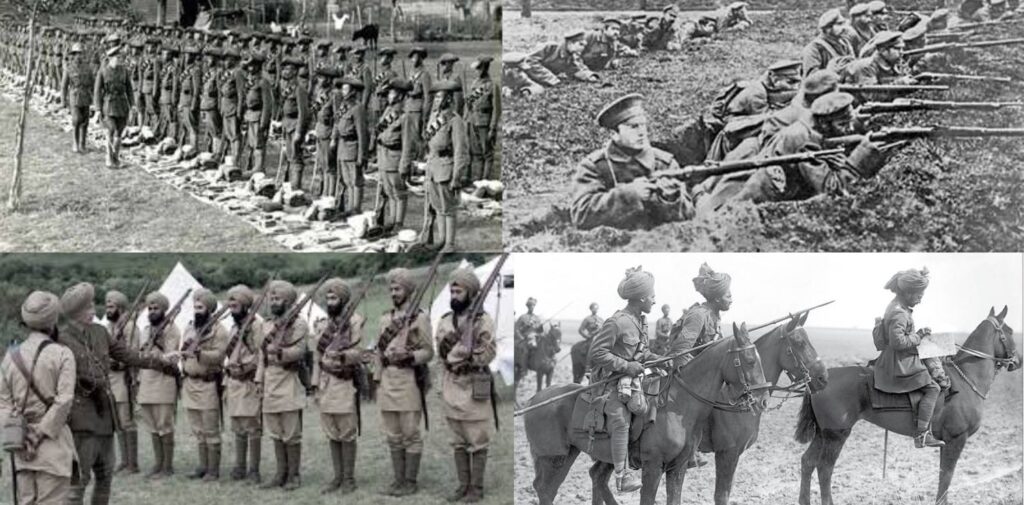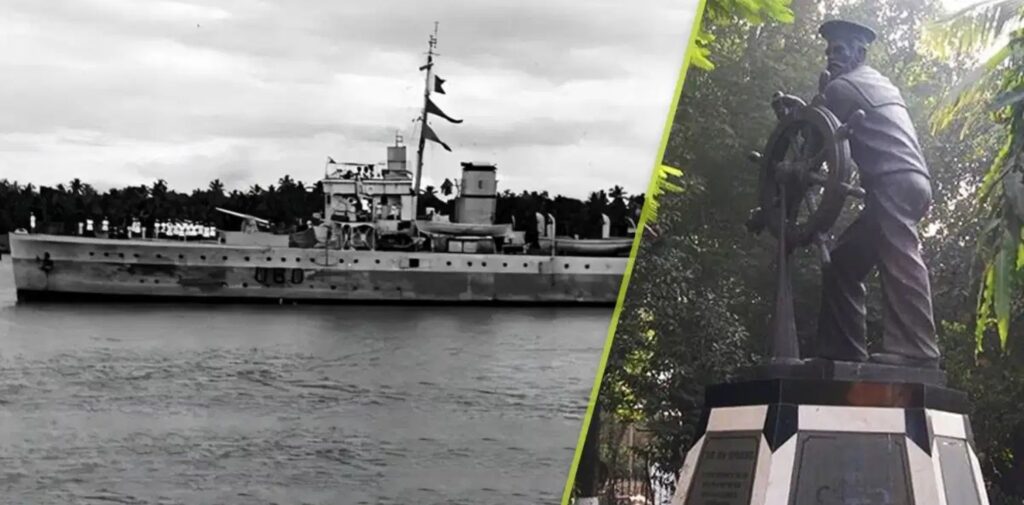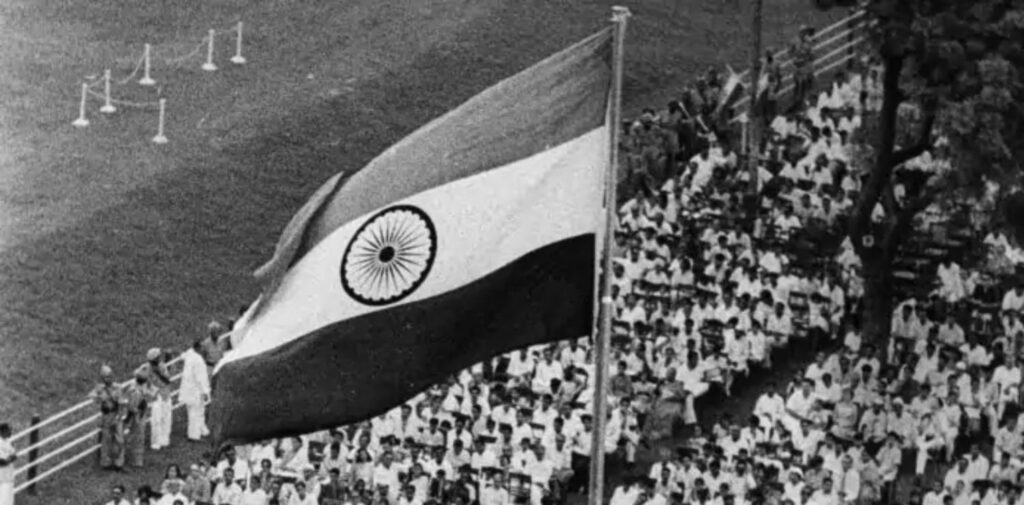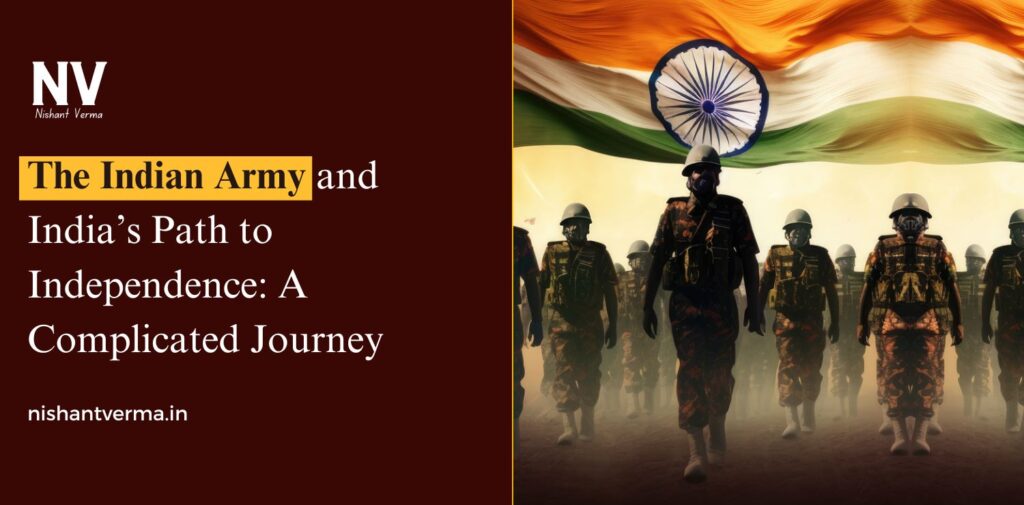India’s struggle for independence from British rule is a story filled with bravery, sacrifice, and the determination of millions of Indians. The Indian Army, an essential part of the colonial structure, played a significant yet complex role in the movement for freedom. While many Indian soldiers fought for the British in World War I and World War II, their involvement also shaped the events that led to India’s independence in 1947. From their participation in global conflicts to their role in internal revolts, the Indian Army’s contribution to the freedom struggle was both direct and indirect, revealing growing dissatisfaction with British rule and the changing dynamics of power within the colonial forces.
The Indian Army During the World Wars
The First and Second World Wars had a profound impact on India and its army. The British Empire, which ruled over India, needed soldiers to fight its wars. The Indian Army was a key source of manpower, and millions of Indian soldiers served in various theatres of war. During the First World War (1914-1918), approximately 1.3 million Indian soldiers fought for the British Empire, with many losing their lives in battles far from home. These soldiers fought in Europe, Africa, and the Middle East, and their sacrifices were significant in terms of both human lives and resources. In return, the British government promised greater self-rule for India, but this promise was largely unfulfilled after the war.
The outcome of the First World War sowed seeds of discontent within the Indian population. Despite the immense contribution of Indian soldiers, the British continued their oppressive rule over the country, leading to frustration and anger. This disillusionment among Indian soldiers and civilians alike began to form the basis of the growing demand for independence.
The role of the Indian Army in the Second World War (1939-1945) was even more extensive. Over 2.5 million Indian soldiers participated in the war, making it one of the largest volunteer forces in history. Indian troops fought in Africa, Europe, and Southeast Asia. The war effort was immense, and India played a crucial logistical and military role in supporting the British. However, by the time the war ended in 1945, the mood among Indian soldiers had changed drastically.

Growing Discontent Among Indian Soldiers
The aftermath of both world wars created a sense of disillusionment among Indian soldiers. While they had fought valiantly and sacrificed their lives for the British Empire, the promises made to them were not kept. After the First World War, the British failed to deliver on their promises of greater autonomy. The lack of political rights, poor pay, and harsh conditions led to a rise in dissatisfaction within the Indian Army.
In the years leading up to World War II, the political climate in India was also changing. The Indian National Congress, led by figures like Mahatma Gandhi and Jawaharlal Nehru, was intensifying its struggle for independence. The British Empire was in a weakened position following the war, and many Indian soldiers began to question the legitimacy of British rule. Their increasing awareness of the political movements in India, combined with their own experience of being treated as second-class citizens, contributed to the growing discontent.
The Royal Indian Navy Mutiny of 1946
One of the key events that revealed the growing unrest among the Indian military was the Royal Indian Navy Mutiny of 1946. Although it involved the navy rather than the army, this mutiny played a crucial role in shaping the political and military landscape of India in the final years of British rule. In February 1946, Indian sailors, frustrated by poor working conditions, low pay, and racial discrimination, went on strike. The protest soon turned into a full-scale mutiny, with support from Indian civilians and workers in cities across India.
The mutiny was a turning point in India’s struggle for independence. It demonstrated that the Indian military, once a loyal servant of the British, was no longer willing to tolerate colonial rule. Although the British were able to suppress the mutiny, the event exposed the deep-seated discontent within the armed forces and the broader Indian society. The mutiny also showed that the British could no longer rely on the Indian military to maintain control over the subcontinent. This contributed to the increasing urgency of negotiations for Indian independence.

The Impact of the 1946 Army Mutiny
The Indian Army itself became increasingly disillusioned by 1946. The soldiers who had fought in the World Wars had seen the world outside India and had experienced life in foreign lands. Many of them had hoped that their sacrifices would lead to greater political rights and recognition, but instead, they returned to a society still under British colonial rule. The army’s growing dissatisfaction was a reflection of the wider political shift in India. People in every part of the country were becoming more vocal in their demand for freedom. The leadership of the Indian National Congress was pressing harder for independence, and mass movements, such as the Quit India Movement of 1942, were gaining momentum.
This change in the Indian military’s loyalty became increasingly clear after the events of the 1946 mutiny. The mutiny was part of a broader pattern of unrest and revolt within the armed forces. In response to these growing challenges, the British government began to recognize that maintaining control over India was becoming increasingly difficult, and the idea of granting India independence gained more support among British policymakers.

The Road to Independence
By 1947, the pressure from within India, combined with the strategic challenges the British were facing in the aftermath of World War II, made it clear that British rule in India was no longer sustainable. The Indian Army, once a symbol of British power, had become a potential threat to the colonial system. British authorities realized that they could no longer rely on the Indian military to maintain control. This shift in the dynamics of the Indian Army played a significant role in hastening India’s independence.
On August 15, 1947, India finally achieved its long-awaited freedom. The Indian Army, which had once been a tool of British control, became an important force in the newly independent country. The role of the Indian military in the independence movement highlighted a shift in the relationship between India and its armed forces. While the army had initially fought for the British, its discontent and eventual participation in mutinies played a critical role in undermining British power.
Conclusion
The Indian Army’s involvement in the freedom struggle is a testament to the complexity of India’s fight for independence. While many soldiers initially served under the British flag, the years of global warfare, disillusionment, and mounting frustration ultimately led to a transformation in the army’s role. The participation of Indian soldiers in the world wars, followed by their growing discontent and the 1946 mutiny, contributed to the weakening of British authority in India.
By the time India achieved independence in 1947, the Indian Army had undergone a profound change. From a tool of British colonial rule to a symbol of India’s strength and sovereignty, the army’s journey mirrored the larger struggle for freedom. The sacrifices of countless Indian soldiers—whether they fought in foreign lands or joined mutinies at home—played a significant part in shaping India’s path to independence. It was a long and complicated road, but the bravery and sacrifices of the Indian Army were integral to the eventual triumph of the Indian independence movement.




